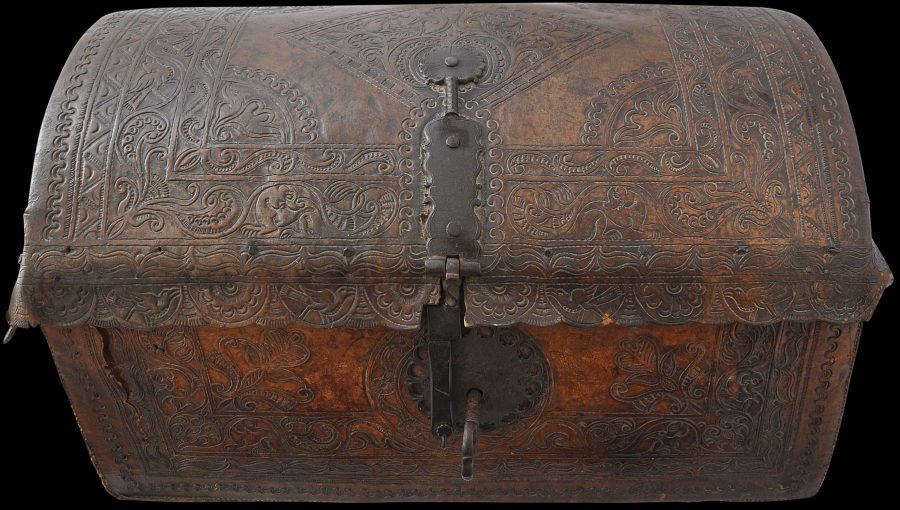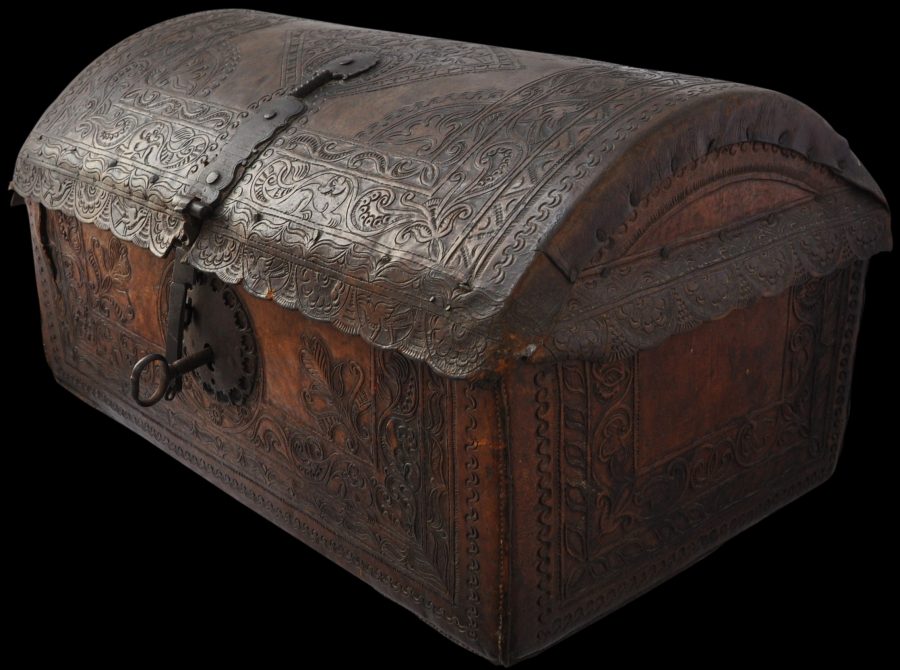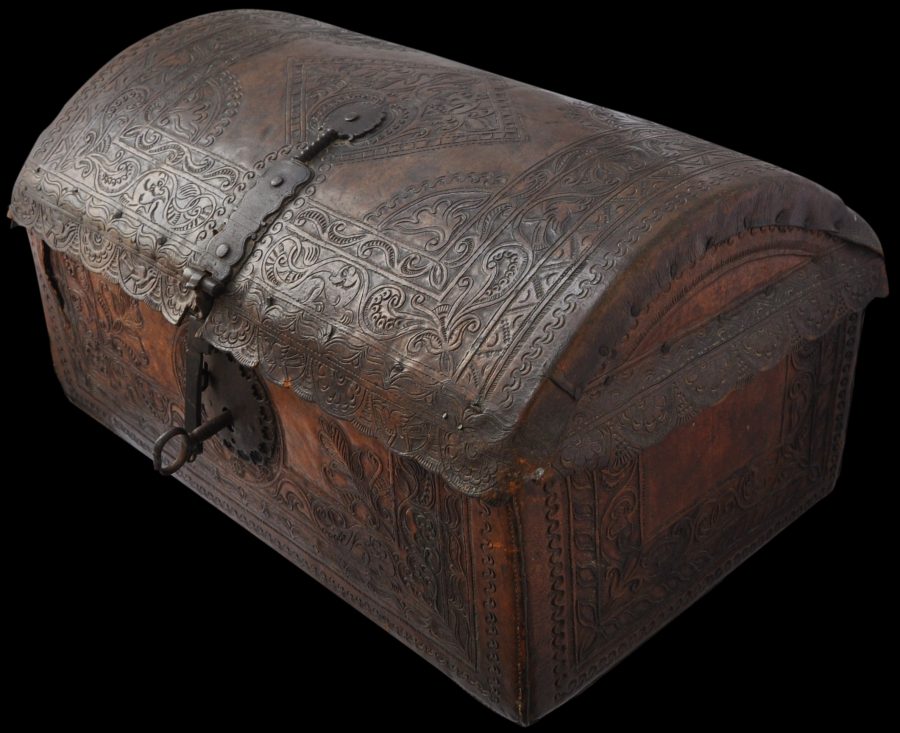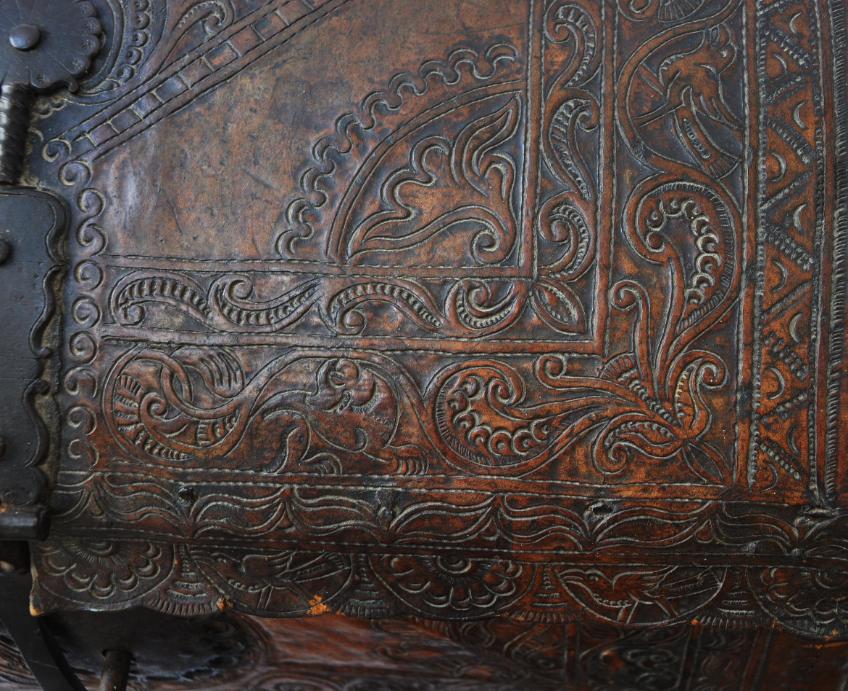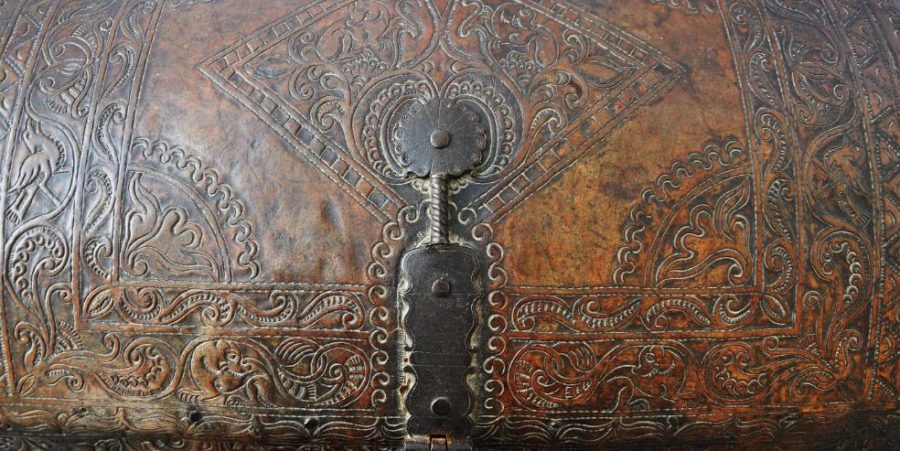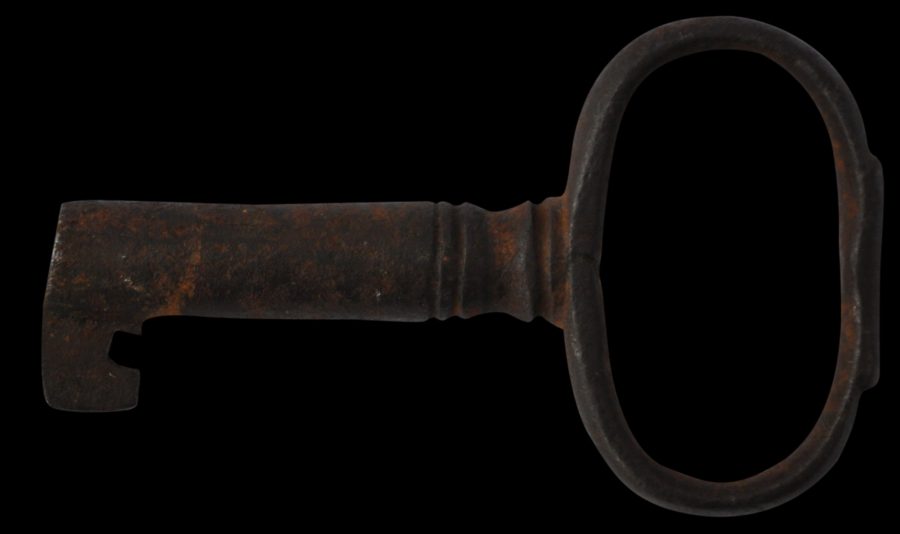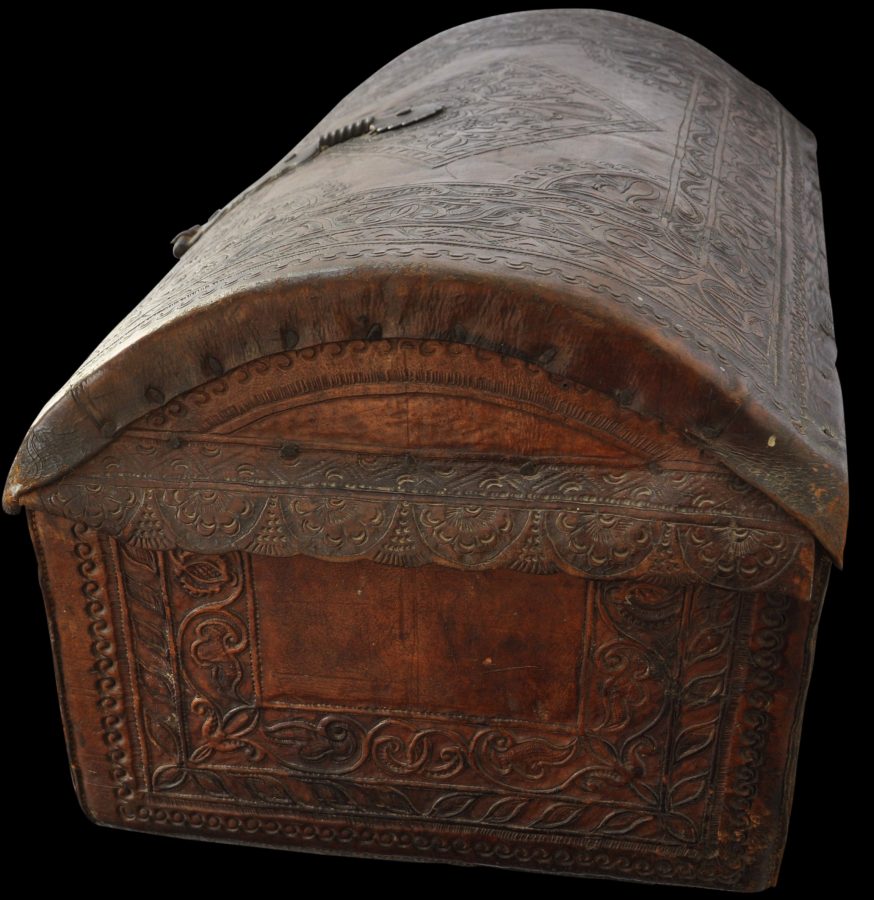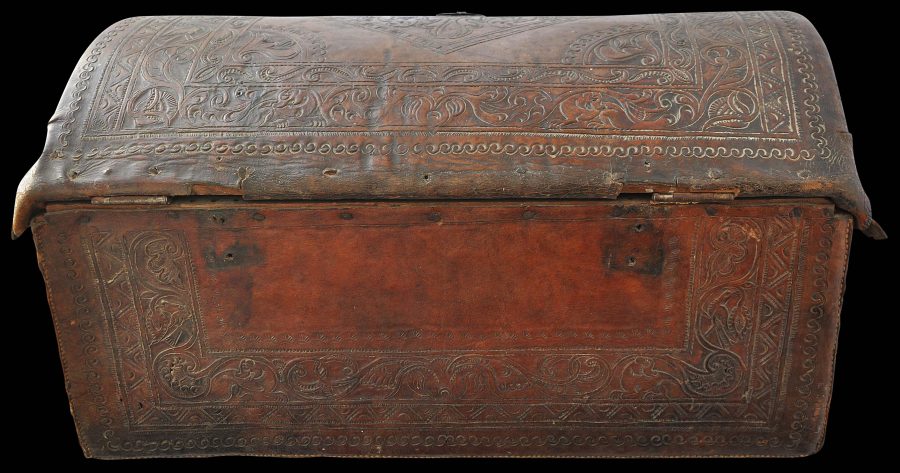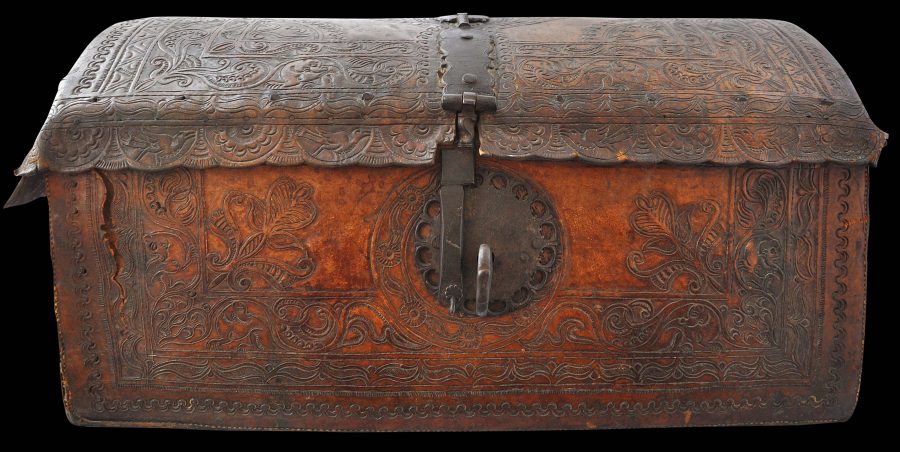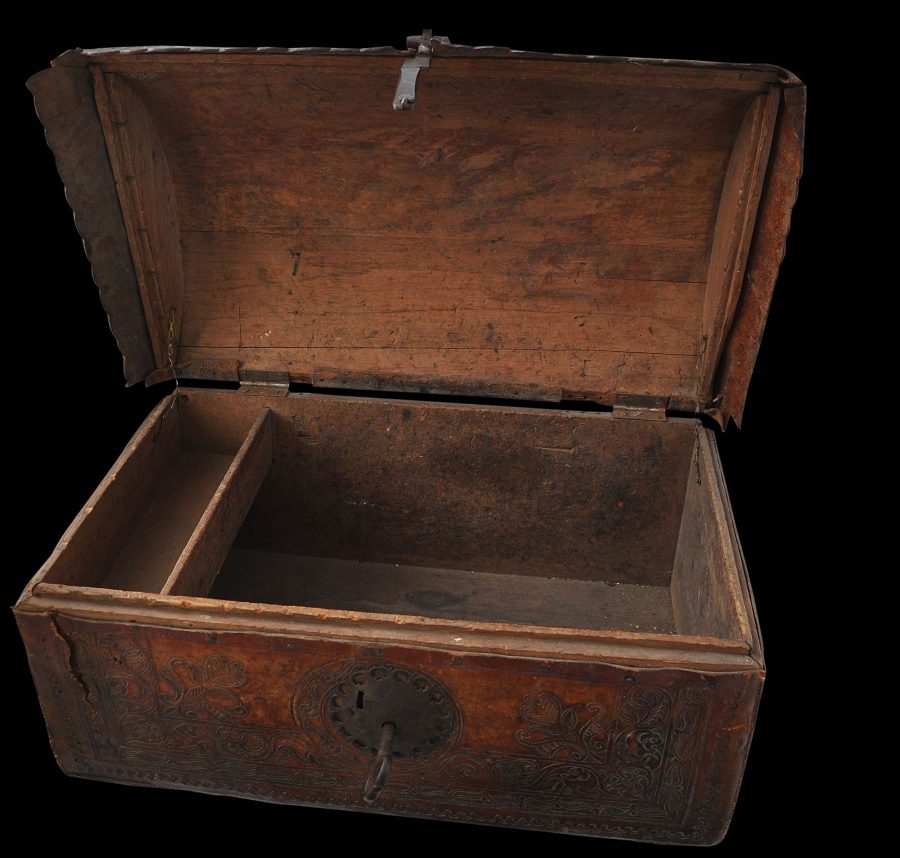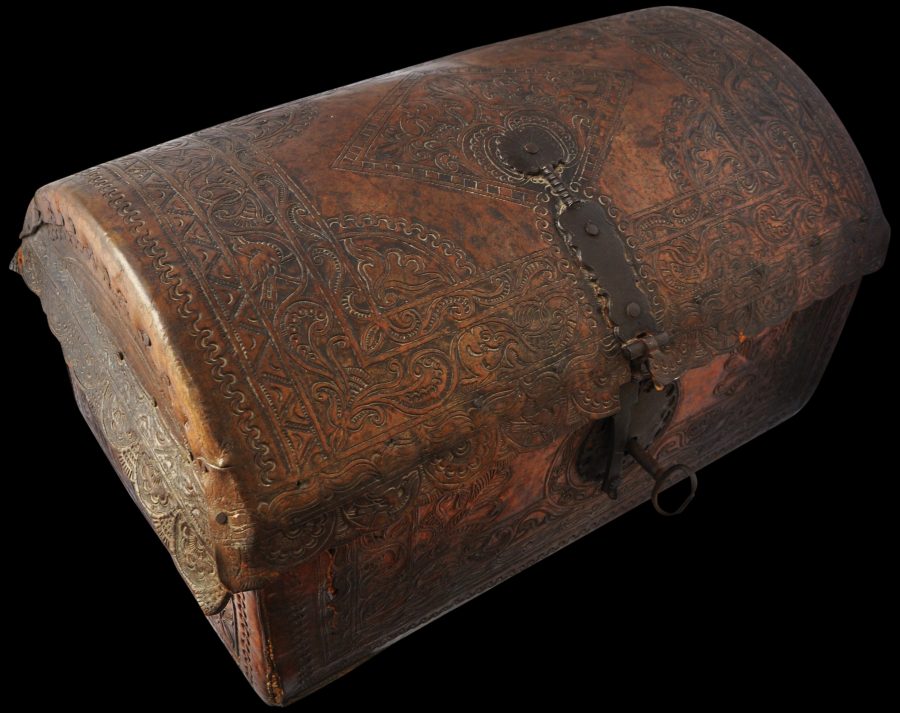This superbly preserved seventeenth century domed chest is richly decorated in tooled, high relief with scrolling foliate and floral borders and geometric shapes similarly in-filled, interspersed with small birds and animals. It is a splendid fusion of Spanish, Moorish (with the Islamic-inspired arabeques and scroll-work) and indigenous South American influences. The Islamic-inspired influences shows how Moorish north African motifs influenced South American art via Spain. Similar designs are evident on South American silver-work of the period (see Phipps et al, 2004).
It is of embossed, tooled leather overlaid and glued to a wooden base. The joins in the leather have also been sewn.
The leather panel that covers the domed lid ends on the sides and the front in a decorative scalloped flap that is decorated with bird and foliate motifs. Such flaps were useful in directing rainwater away from the gap between the base and the lid.
The iron fittings comprise an ornamental lock with a circular open-work key plate and a bolt that extends down from another decorative circular and another elongated plate on the cover. Remarkably, the chest retains its original key and the lock still turns. The key plate does not line up with the tooled leather motifs beneath it. It is not clear why this should be as the key plate almost certainly is original. It might simply be that this was how the chest was constructed.
The manufacturing of items in decorative leatherwork was a flourishing trade in the viceregal era across South America. Leather-covered chests and trunks were among the items most typically made. Chests such as these were used both for the storage and transport of fragile and costly clothing and cloth. According to Rishel & Stratton-Pruitt (2006, p.130) most chests so made were based on rectangular European models but some, like the example here, were based on a form that was pre-Hispanic in origin: the Mexican petaca which was based on the Aztec petlacilli which was a chest made of woven cane. The term petaca came to be used all over South America for a leather truck or chest. Peru was the largest producer of quality tooled leather chests and other containers and these were exported across South America.
In terms of condition, there is a small tear to the leather panel on the front of the box and the hinges at the back have been replaced and the associated flanges are missing. But otherwise, this chest is in remarkable condition for its age and without the substantial losses to the leather panels of many extant examples.
A bigger chest but of almost identical form and with similar tooled scrolling foliage and stylised orchid motifs is illustrated in Rishel & Stratton-Pruitt (2006, p.130).
References
Phipps, E. et al, The Colonial Andes: Tapestries and Silverwork, 1530-1830, The Metropolitan Museum of Art, 2004.
Rishel, J.J. & S. Stratton-Pruitt, The Arts in Latin America 1492-1820, Yale University Press, 2006.


